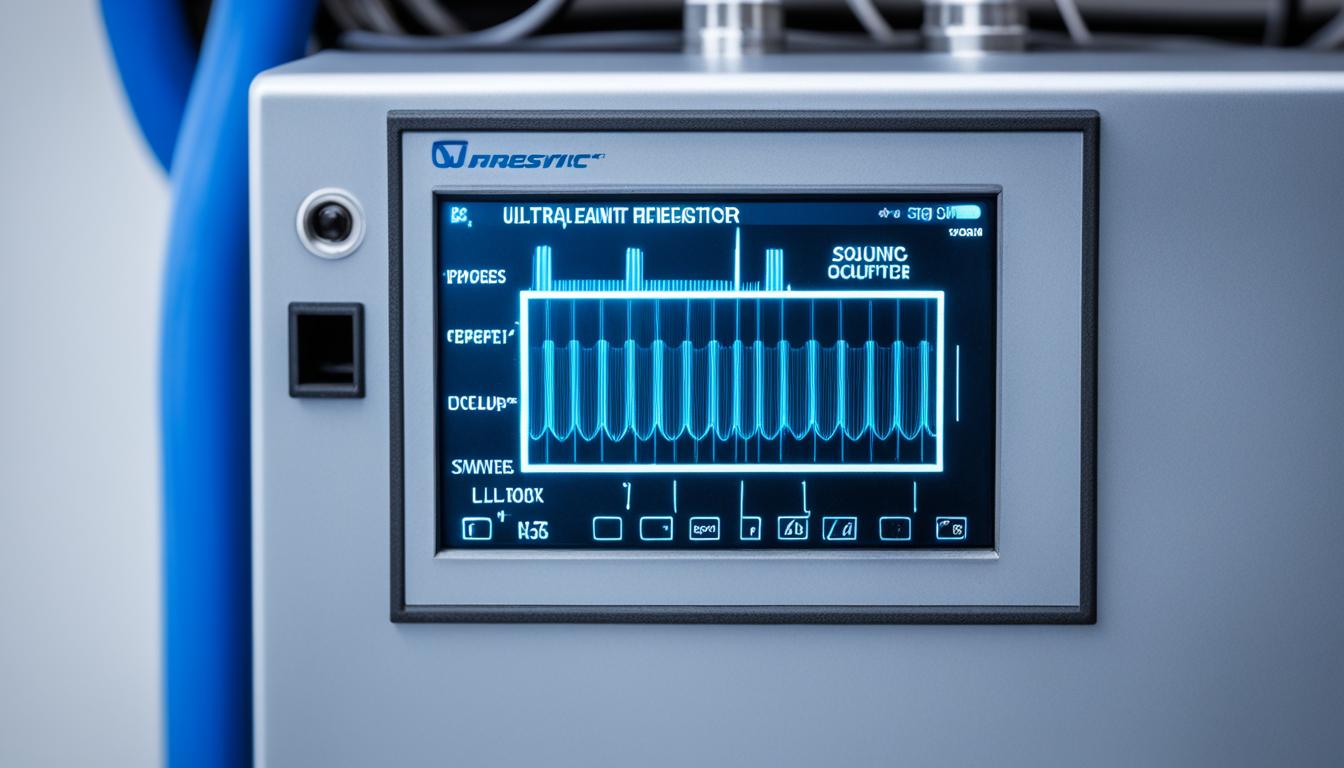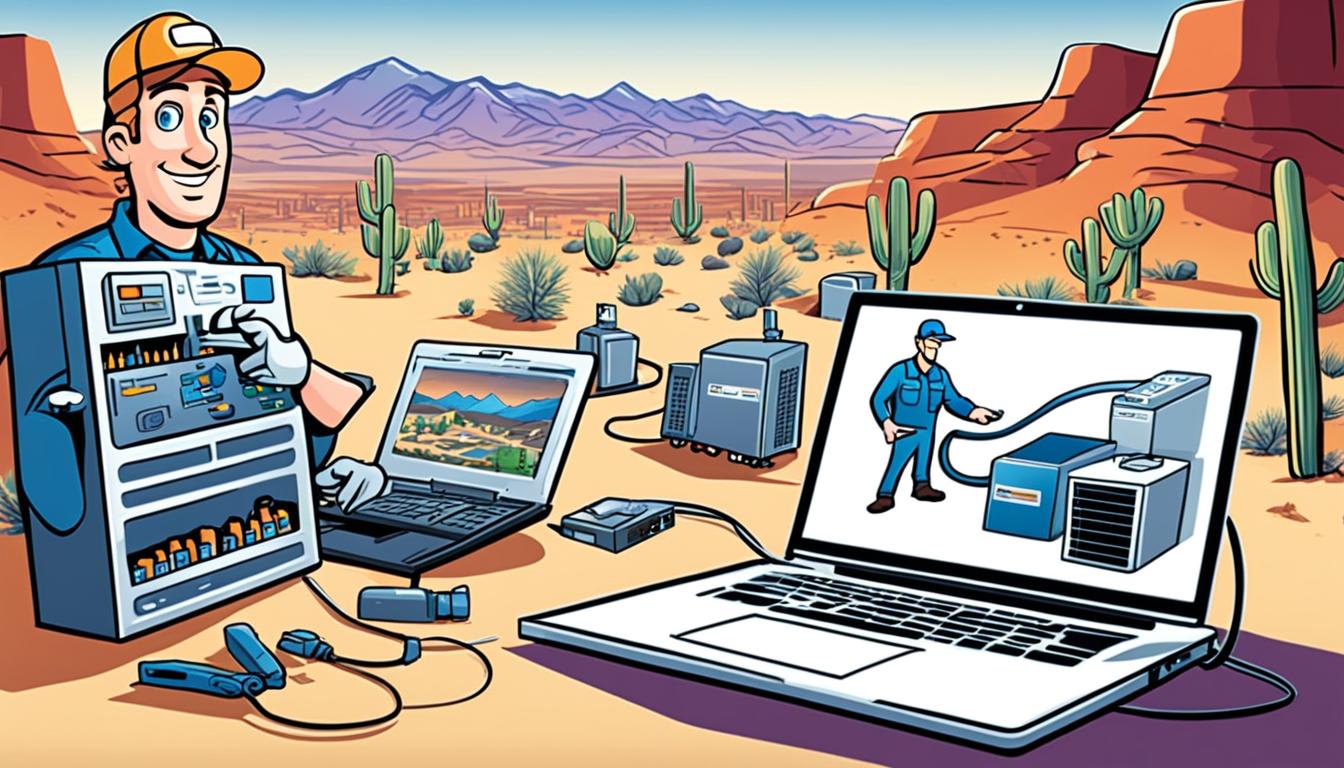Imagine this scenario: it’s the hottest day of the year, and you’re seeking refuge inside your home. But instead of the cool, refreshing air you were expecting, you’re greeted with warm gusts and discomfort. Something is wrong with your HVAC system, but you can’t quite figure out what it is.
You call in an AC repair contractor, and they start inspecting your unit. They mention the possibility of a refrigerant leak, a tiny fault that’s causing your system to struggle. The mere thought of wasted energy and costly repairs leaves you feeling anxious and frustrated.
But there’s hope.
Enter ultrasonic leak detectors, a revolutionary technology designed to accurately locate even the smallest refrigerant leaks in large HVAC systems. With their unparalleled sensitivity to ultrasonic sounds, these devices can swiftly pinpoint the exact source of the leak, saving you time, money, and unnecessary stress.
When it comes to HVAC leak detection, ultrasonic leak detectors are the heroes you’ve been waiting for. Let’s delve into how these remarkable tools work and why they are the go-to solution for detecting and repairing refrigerant leaks.
Key Takeaways:
- Ultrasonic leak detectors use state-of-the-art technology to accurately locate small refrigerant leaks in large HVAC systems.
- They are extremely sensitive to ultrasonic sounds and can translate them into audible frequencies.
- Ultrasonic leak detectors can detect leaks that traditional methods may miss, making them especially useful in challenging environments with high background noise.
- These detectors offer several advantages, including the ability to detect leaks of all sizes and prevent unnecessary energy loss and damage to the system.
- By detecting and repairing refrigerant leaks promptly, you can improve energy efficiency, reduce costs, and maintain optimal HVAC system performance.
Advantages of using ultrasonic leak detectors
When it comes to detecting leaks in HVAC systems, ultrasonic leak detectors offer a multitude of advantages. These cutting-edge tools utilize advanced technology to accurately locate leaks of all sizes, whether it’s an air leak or a refrigeration leak.
One of the primary advantages of ultrasonic leak detectors is their ability to detect even the tiniest leaks that may not be immediately visible or audible. By utilizing ultrasonic technology, these detectors can pick up the ultrasonic sound of a turbulent gas leak and translate it to a frequency that can be interpreted by the human ear. This ensures that no leaks go undetected, helping to prevent unnecessary energy loss and potential damage to the system.
Ultrasonic leak detectors are particularly beneficial in HVAC systems that use compressed air. Leaks in the pneumatic system can lead to increased energy consumption and reduced efficiency. With an ultrasonic air leak detector, contractors can quickly identify and fix these leaks, optimizing system performance and reducing costs.
In addition to detecting leaks, ultrasonic leak detectors can also be used to evaluate the proper operation of valves and troubleshoot any issues with pneumatic expansion valves. This allows HVAC professionals to diagnose and address potential problems before they escalate.
Overall, the use of ultrasonic leak detectors in heating and cooling systems has several advantages. These tools improve energy efficiency, reduce costs, and help maintain optimal system performance. By promptly detecting and addressing leaks, HVAC contractors can ensure the integrity of the system and provide their clients with efficient and reliable HVAC solutions.
Causes and effects of refrigerant leaks in HVAC systems

Refrigerant leaks in HVAC systems can have various causes and effects that impact system performance and environmental concerns. Understanding the causes and effects of these leaks is crucial for HVAC professionals in maintaining efficient and safe systems.
Common Causes of Refrigerant Leaks
- Poor initial installation: Improper installation of HVAC systems can lead to refrigerant leaks over time. Faulty connections, loose fittings, or inadequate sealing can result in leaky systems.
- Wear and tear: HVAC systems experience regular use and exposure to environmental factors, leading to wear and tear on components. Over time, this wear can contribute to the development of refrigerant leaks.
- Construction-related factors: Construction activities around HVAC systems or nearby structures can cause damage to refrigerant lines, resulting in leaks. Vibrations, shifting foundations, or accidental punctures can all contribute to refrigerant leaks.
Effects of Refrigerant Leaks
Refrigerant leaks can have significant consequences for HVAC systems, both in terms of performance and environmental impact. Here are some notable effects:
- Reduced cooling capabilities: Insufficient refrigerant levels due to leaks can impair the cooling efficiency of HVAC systems, resulting in poor performance and discomfort for occupants.
- Inefficiency and increased energy consumption: Leaks force HVAC systems to work harder to maintain temperature control, leading to increased energy consumption and higher utility bills.
- Environmental implications: Some refrigerants used in HVAC systems, such as hydrochlorofluorocarbons (HCFCs) or hydrofluorocarbons (HFCs), can contribute to ozone depletion or have high global warming potential. Leaks of these substances can exacerbate environmental concerns and contribute to climate change.
Regular leak detection using advanced technologies like ultrasonic leak detection devices can help mitigate these effects and prevent further damage. Employing such devices enables HVAC professionals to identify and repair leaks promptly, conserving refrigerant, reducing energy waste, and minimizing environmental impact.
Utilizing ultrasonic leak detection technology in HVAC systems offers a reliable and efficient method to detect and pinpoint refrigerant leaks. By harnessing the power of sound waves and advanced detection algorithms, ultrasonic leak detectors provide precise results, enabling prompt repairs and ensuring the integrity and efficiency of HVAC systems.
Methods for detecting and repairing refrigerant leaks
When it comes to detecting and repairing refrigerant leaks in HVAC systems, there are several methods that can be employed. It all starts with a visual inspection, where technicians carefully examine the fittings for any oil residue, which can indicate a leak. Another helpful method is audible sound detection, where technicians listen for hissing sounds that could potentially indicate a leak.
To pinpoint the general area of small leaks, more advanced methods come into play. Ultrasonic leak detectors and electronic leak detectors are highly effective in detecting leaks, allowing technicians to quickly identify the general location of the leak. To further narrow down the exact location, additional techniques like the soap bubble test and the standing pressure test can be utilized.
Repairing leaks depends on various factors such as the size and location of the leak. Technicians have options ranging from soldering or brazing the leak on copper piping to replacing the component altogether. After the repairs are done, it is crucial to check the system to ensure that the fix was successful. This is typically done through a standing pressure test and recharging the system with the necessary refrigerant if the repair proves to be effective.
By utilizing ultrasonic leak detectors and implementing proper leak detection methods, HVAC professionals can ensure the integrity and efficiency of the HVAC system by effectively identifying and repairing leaks. Remember, early detection and timely repairs can save energy and prevent further damage to the system.





0 Comments